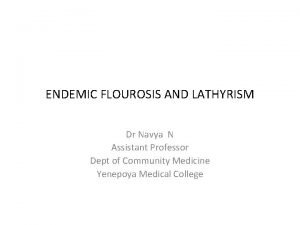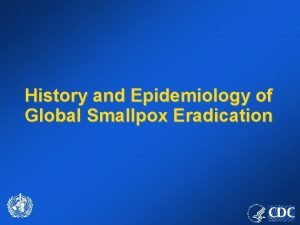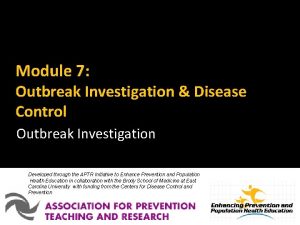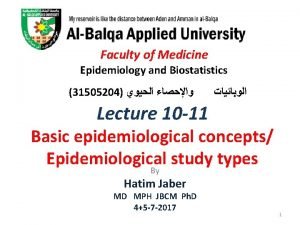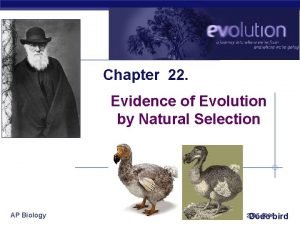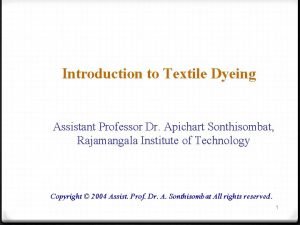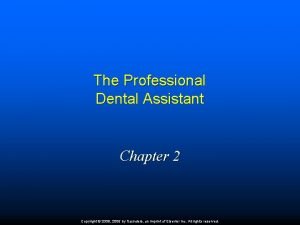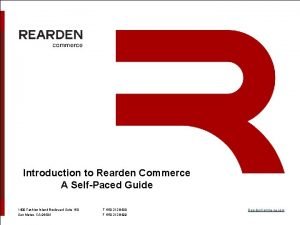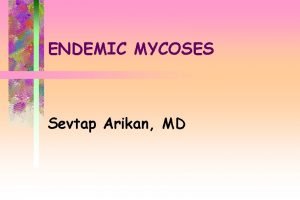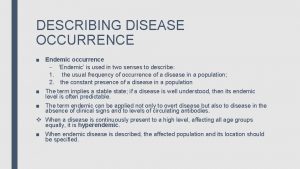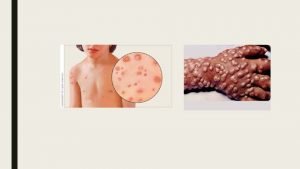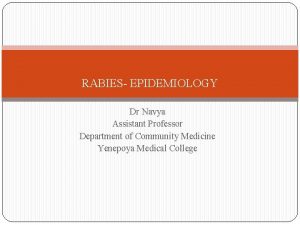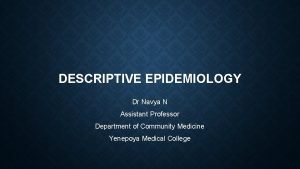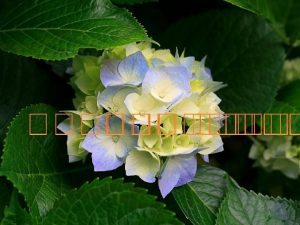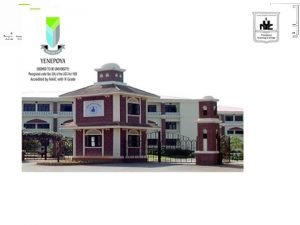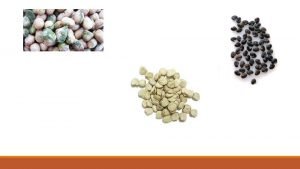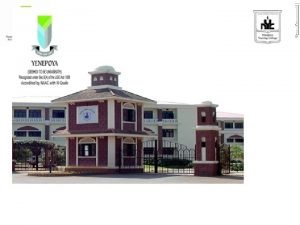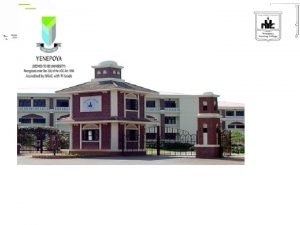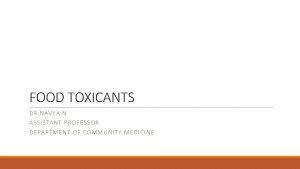ENDEMIC FLOUROSIS AND LATHYRISM Dr Navya N Assistant



























- Slides: 27


ENDEMIC FLOUROSIS AND LATHYRISM Dr Navya N Assistant Professor Dept of Community Medicine Yenepoya Medical College

FLOURINE • Fluorine – most abundant element in nature • only combined form. • essential - normal mineralization of bones and formation of dental enamel. principal sources (a) Drinking water : The major source (b) Foods : seafish, cheese and tea • Reqiurements: in drinking water accepted -0. 5 to 0. 8 mg/L

DEFICIENCY/ EXCESS • Two-edged sword. • Prolonged ingestion of fluorides through drinking water in excess- dental and skeletal fluorosis Endemic flourosis : water – 3 -5 mg/L of flourine a) Dental fluorosis – mottling of dental enamel-above 1. 5 mg/L intake b) Skeletal fluorosis : lifetime daily intake of 3. 0 to 6. 0 mg/L or more • Inadequate intake - dental caries. INTERVENTIONS : 1. Changing water source 2. Chemical treatment : Nalgonda technique

DISEASE DISTRIBUTION • In many parts of world- drinking water- excessive amounts of fluorine (3 -5 mg/L)- endemic fluorosis • Important health problem-e. g. . Andhra Pradesh (Nellore, Nalgonda and Prakasam districts), Punjab, Haryana, Karnataka, Kerala and Tamil Nadu

TOXIC MANIFESTATIONS (a) Dental Fluorosis : • Excess fluoride- ingested- years of tooth calcification – first 7 years of life • Characterised- "mottling“- dental enamel- levels above 1. 5 mg/L intake • Early sign- dental fluorosis- teeth lose- shiny appearance and chalk-white patches- develop on them. • Later- white patches yellow brown or black. • Severe cases- loss of enamel- teeth - corroded appearance. • Mottling - best seen- incisors of the upper jaw. • Almost entirely confined- permanent teeth and develops only during the period of formation

(A) DENTAL FLUOROSIS :

TOXIC MANIFESTATIONS (b) Skeletal fluorosis : • Associated - lifetime daily intake of 3. 0 to 6. 0 mg/L or more. • Heavy fluoride deposition- skeleton. • Concentration - 10 mg/L- exceeded- crippling fluorosis- leads- permanent disability.

Skeletal fluorosis :

TOXIC MANIFESTATIONS (c) Genu Valgum: • New form- fluorosis characterised- genu valgum and osteoporosis- lower limbs- recent years – some districts- Andhra Pradesh and Tamil Nadu • Syndrome- staple- sorghum (jowar). • Further studies- diets based on sorghum- higher retention of ingested fluoride than- diets based on rice

INTERVENTION 1. Changing the water source : • Find- new source-drinking water- lower fluoride content (0. 5 to 0. 8 mg/L) • Running surface water- lower quantities of fluorides than ground water(wells)

INTERVENTION 2. Chemical treatment : • Water chemically defluoridated- water treatment plant- moderately expensive • National Environmental Engineering Research lnstitute, Nagpurdeveloped- technique- Nalgonda technique- defluoridation of water. • lnvolves- addition- two chemicals (viz. lime and alum) in sequence flocculation, sedimentation filtration.

INTERVENTION 3. Other measures: • Fluoride supplements- NOT - prescribed for children - who drink fluoridated water. • Use- fluoride toothpaste – areas-endemic fluorosis- NOT recommendedchildren upto 6 years of age

LATHYRISM • Lathyrism- paralysing disease- humans and animals. • Humans- neurolathyrism- affects the nervous system • Animals- osteolathyrism (odoratism)- pathological changes- bonesskeletal deformities • Neurolathyrism- crippling disease- nervous system Characterised: • Gradually developing spastic paralysis- lower limbs, • Adults consuming- pulse- Lathyrus sativus- large quantities

PROBLEM STATEMENT • Prevalent- Madhya Pradesh, Uttar Pradesh, Bihar and Orissa. • Also- reported - Maharashtra, West Bengal, Rajasthan, Assam and Gujaratpulse is grown. • Recent reports- are no fresh outbreaks of the disease in endemic areasshifting trends in agronomical practices • Lathyrism - Spain and Algeria- Lathyrus is eaten

PULSE • Lathyrus sativus- "Khesari dhal“- local names- Teora dhal, Lak dhal, Batra, Gharas, Matra etc. • Seeds- lathyrus- triangular shape and grey colour. • When dehusked pulse- similar- red gram dhal or bengal gram dhal. • Lathyrus- good source of protein, but toxin- affects nerves. • It is eaten mostly- poor agricultural labourer- relatively cheap. • Studies- diets containing over 30% of dhal- taken over 2 -6 monthsneurolathyrism

KESARI DHAL

TOXIN • Beta oxalyl amino alanine (BOAA). • Isolated - crystalline form and is water soluble • This property- made use- removing toxin from pulse- soaking it in hot water and rejecting the soak water. • Studies- blood-brain barrier- toxin. • To overcome this barrier- pulse- eaten in large amounts- period of time for 2 months or more. • Several other toxins have also been reported

CLINICAL FEATURES • Disease affects- young men between- age of 15 to 45 years and manifests itself in stages : 1. LATENT STAGE 2. NO STICK STAGE 3. ONE STICK STAGE 4. TWO STICK STAGE 5. CRAWLER STAGE

CLINICAL FEATURES (a) Latent stage : • Individual- apparently healthy, but- subjected to physical stress- ungainly gait. • Neurological examination- characteristic physical signs. • This stage – important- preventive aspect- if the pulse- withdrawn from the diet- complete remission of the disease. (b) No-stick stage : Patient walks- short jerky steps without the aid of a stick. (c) Onestick stage- Patient walks- crossed gait with a tendency to walk on toes. • Muscular stiffness makes it necessary to use a stick to maintain balance.

CLINICAL FEATURES (d) Two stick stage : symptoms- more severe. • Excessive bending of knees and crossed legs- patient needs two crutches for support. • The gait is slow and clumsy- patient gets tired easily after walking a short distance. (e) Crawler stage : Erect posture- impossible- knee joints cannot support the weight of the body. • Atrophy of the thigh and leg muscles. • The patient is reduced- crawling by throwing his weight on his hands

CLINICAL FEATURES

INTERVENTIONS (a) Vitamin C prophylaxis: certain instances- damages- repaired by the daily administration of 500 -1000 mg of ascorbic acid for a week or so. (b) Banning the crop : extreme step not feasible- immediate implementation. • The Prevention of Food Adulteration Act in India-banned lathyrus in all forms - whole, split or flour. • But ban- not operative where it is needed- Madhya Pradesh, Bihar, Orissa and Gujarat- pulse is widely grown. • If not possible to avoid consuming khesari dhal- proportion of the dhal never form more than a quarter of the total amount of cereals and pulses eaten per day. c) Removal of toxin

REMOVAL OF TOXIN 1. Steeping Method : • Toxins- water soluble- can be removed by soaking the pulse in hot water. • This method- practised at home. • A large quantity water- boiled and the pulse is soaked in hot water for 2 hours • Soaked water is drained off completely. • Pulse washed again- clean water, then drained off and dried- sun. • The pulse is then used for consumption. • Drawback with this method - loss of vitamins and minerals. 2. Parboiling : An improved method of detoxicating- "parboiling" • Suitable- large scale operation. • Simple soaking in lime water over- night followed by boiling - destroy the toxin.

INTERVENTIONS d) Education : public- dangers of consuming- pulse and need for removing toxin before consumption. e) Genetic approach: Certain strains - very low levels of toxin (0. 1%). • The selective propagation and cultivation of such strains f) Socio-economic changes: only socio-economic changes or overall development -root out lathyrism.

SUMMARY ? ?

THANK YOU
 Navya venkateshaiah
Navya venkateshaiah Stages of lathyrism
Stages of lathyrism Lathyrism
Lathyrism Smallpox endemic
Smallpox endemic Endemic epidemic
Endemic epidemic Endemic epidemic
Endemic epidemic Natural
Natural Conclusion of endemic species in india
Conclusion of endemic species in india Cholera 1817
Cholera 1817 Scorer and assistant scorer duties and responsibilities
Scorer and assistant scorer duties and responsibilities Shopping for clothes dialogue
Shopping for clothes dialogue When did you last go shopping
When did you last go shopping Printing and dyeing assistant
Printing and dyeing assistant Ethical and legal issues affecting the nursing assistant
Ethical and legal issues affecting the nursing assistant The nursing assistant and the care team
The nursing assistant and the care team Chapter 2 foundations of resident care
Chapter 2 foundations of resident care The sign makers assistant
The sign makers assistant Workkeys applied mathematics level 5 answers
Workkeys applied mathematics level 5 answers The assistant chapter 2
The assistant chapter 2 Home assistant fglair
Home assistant fglair Medical assistant rop
Medical assistant rop Promotion from associate professor to professor
Promotion from associate professor to professor Mia irwan
Mia irwan Cisco configuration assistant download
Cisco configuration assistant download Kpu health care assistant
Kpu health care assistant Virtually there e ticket receipt
Virtually there e ticket receipt Interview questions for student assistant
Interview questions for student assistant Ibm support assistant workbench
Ibm support assistant workbench

